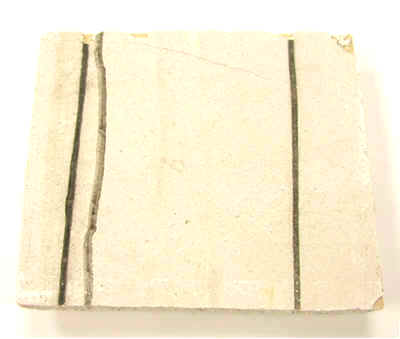
In 1945, the United States detonated two atomic bombs over the Japanese cities of Hiroshima and Nagasaki, which ended World War II. The heat from the explosions over Hiroshima caused the severe blistering of buildings. While some of the buildings in the area were completely obliterated, others further from the blast zone sustained damage but remained standing. In those cases, artifacts were able to be collected. In addition to the roof tile that made its way into our museum, there is also another part of a building that has an interesting story. Here is everything you need to know about the wall tile located at ORAU’s Museum of Radiation and Radioactivity.
Who donated it?
The items in our museum come from various sources. Paul Frame, Ph.D., is a retired ORAU health physicist and is also the curator of ORAU’s Museum of Radiation and Radioactivity. Throughout his years at ORAU, his collection gained popularity among health physicists and people with an interest in radiation and radioactivity. People from all around the world have donated items to the museum. The museum chronicles the scientific and commercial history of radioactivity and radiation. The wall tile from Hiroshima was provided by Oak Ridge National Laboratory, courtesy of David Fields. Fields was a research scientist in the HSR division at the lab for 24 years.
What makes the tile unique?
According to Frame, the intense fires created around Hiroshima by the bomb sent large quantities of ash into the atmosphere. The ash had the effect of ‘seeding’ the clouds and the result was a ‘black rain’ that fell 1-2 hours after the explosion. This rain, which had a tar-like consistency, was a combination of the ash, radioactive fallout, and water. In at least some cases, severe radiation burns resulted. In the case of the building that the wall tile came from, the black rain penetrated the damaged roof and ran down the walls leaving the tracks seen on the plaster.
Why artifacts from Hiroshima matter?
As you may know, the atomic bombings of Hiroshima and Nagasaki marked the end of World War II. This artifact, along with the other items in ORAU’s Museum of Radiation and Radioactivity from Hiroshima, show the reality of the damage caused by the atomic bombs. A large percentage of the buildings in Hiroshima during this time were primarily made of wood. As a result, they were pretty well destroyed by the blast and the resulting fires. In many cases, all that remained were fragments of the ceramic roof tiles and other rubble.
How can you learn more?
Our museum includes all sorts of items related to the history of radiation and radioactivity. With everything from Fiestaware to radioactive dinosaur bones to dosimeters, the collection has something for everyone. Be sure to browse the online collection and be on the lookout for news regarding how you can visit the collection at Pollard Center on ORAU’s main campus in Oak Ridge beginning in early 2025.